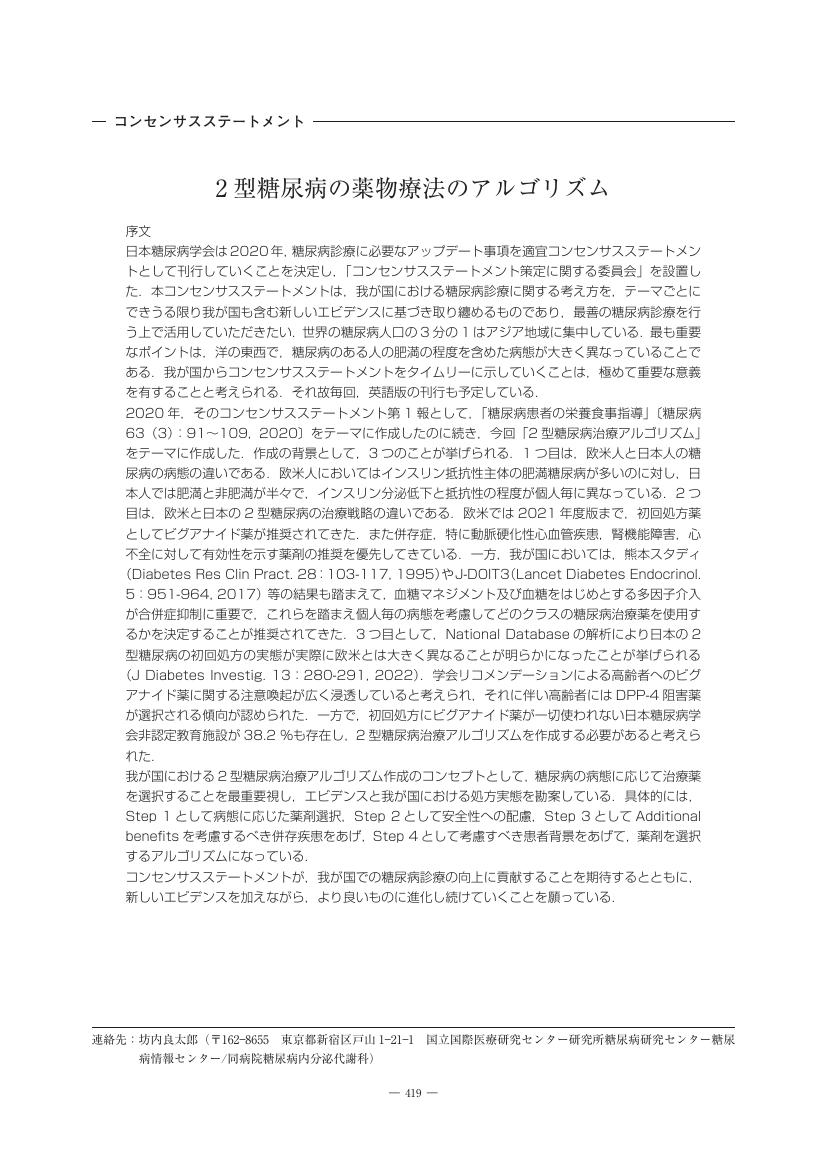- J-STAGEトップ
- /
- 糖尿病
- /
- 65 巻 (2022) 8 号
- /
- 書誌
-
坊内 良太郎
国立国際医療研究センター研究所糖尿病研究センター糖尿病情報センター 日本糖尿病学会コンセンサスステートメント策定に関する委員会 委員
-
近藤 龍也
熊本大学病院糖尿病・代謝・内分泌内科 日本糖尿病学会コンセンサスステートメント策定に関する委員会 委員
-
太田 康晴
山口大学大学院医学系研究科病態制御内科学講座 日本糖尿病学会コンセンサスステートメント策定に関する委員会 委員
-
後藤 温
横浜市立大学大学院データサイエンス研究科ヘルスデータサイエンス専攻
-
田中 大祐
京都大学大学院医学系研究科糖尿病・内分泌・栄養内科学
-
佐藤 博亮
順天堂大学医学部附属浦安病院糖尿病・内分泌内科
-
矢部 大介
岐阜大学医学系研究科糖尿病・内分泌代謝内科学/膠原病・免疫内科学
-
西村 理明
東京慈恵会医科大学糖尿病・代謝・内分泌内科
-
原田 範雄
京都大学大学院医学系研究科糖尿病・内分泌・栄養内科学 日本糖尿病学会コンセンサスステートメント策定に関する委員会 委員
-
神谷 英紀
愛知医科大学医学部内科学講座糖尿病内科 日本糖尿病学会コンセンサスステートメント策定に関する委員会 委員
-
鈴木 亮
東京医科大学糖尿病・代謝・内分泌内科 日本糖尿病学会コンセンサスステートメント策定に関する委員会 委員
-
山内 敏正
東京大学大学院医学系研究科内科学専攻生体防御腫瘍学講座代謝・栄養病態学分野 日本糖尿病学会コンセンサスステートメント策定に関する委員会 委員長
-
日本糖尿病学会コンセンサスステートメント策定に関する委員会
2022 年 65 巻 8 号 p. 419-434
- 発行日: 2022/08/30 受付日: - J-STAGE公開日: 2022/08/29 受理日: - 早期公開日: - 改訂日: -
(EndNote、Reference Manager、ProCite、RefWorksとの互換性あり)
(BibDesk、LaTeXとの互換性あり)


